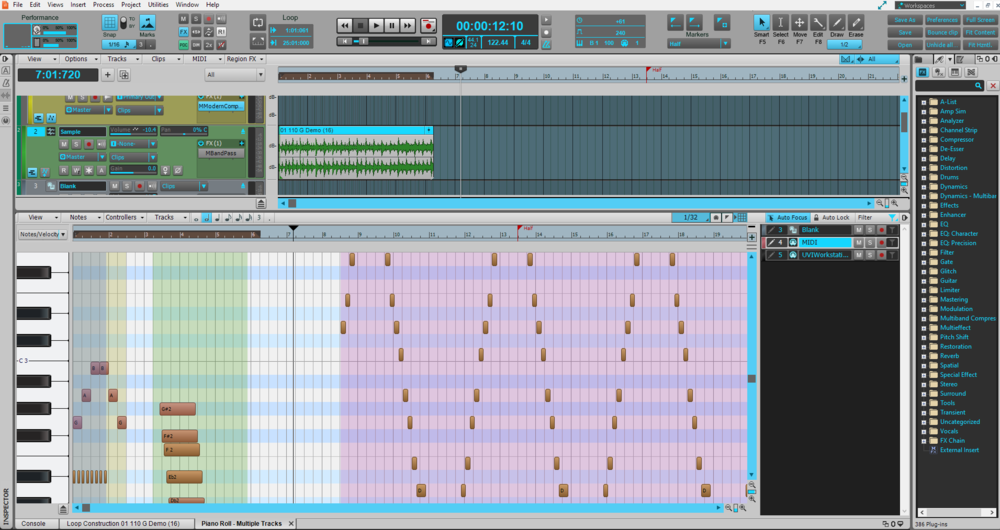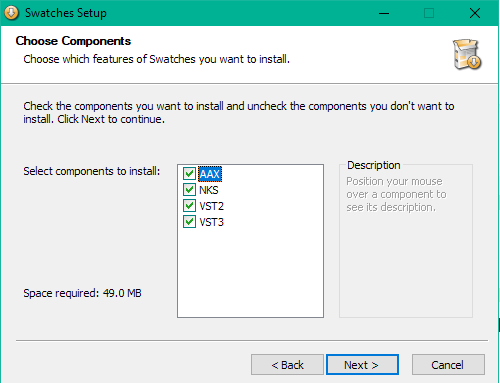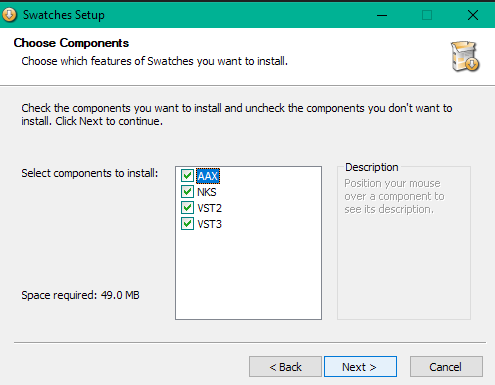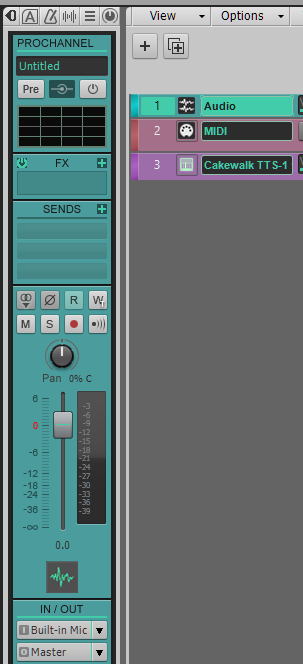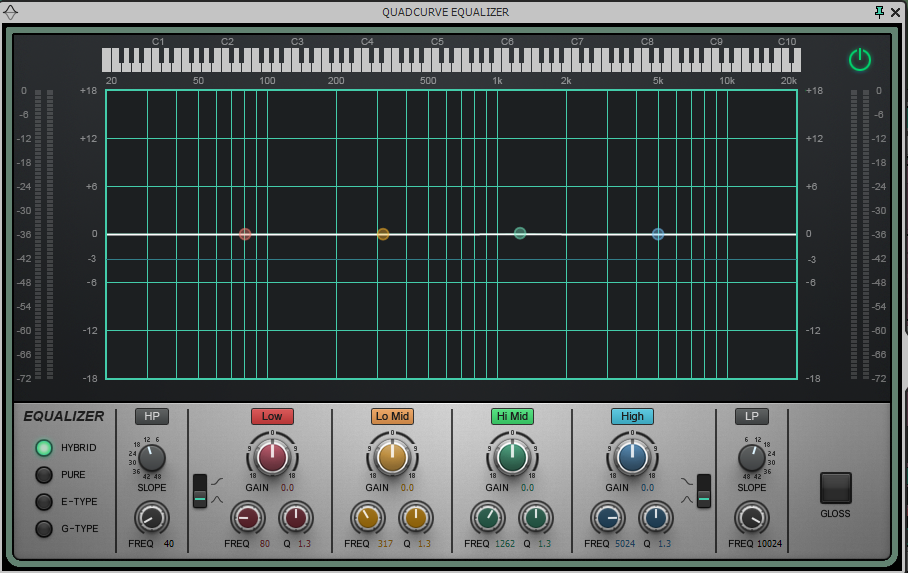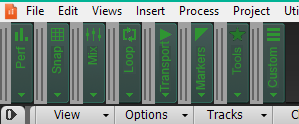-
Posts
8,620 -
Joined
-
Last visited
-
Days Won
30
Everything posted by Starship Krupa
-
Somewhere along the way, Chorus and Reverb got baked into the MIDI spec along with pitch bend. It's to control those parameters when an instrument has them built in (and is designed to respond to the MIDI chorus and reverb parameters). Unfortunately not all soft synths with built in reverb respond. I like to disable the synths' built in reverb and instead use whatever reverb I have on my Reverb Send bus.
-
I'm not sure what you mean by this. Are you referring to the Track view/Focused Track Background highlight? It works as it should whether I have Synth Rack docked or undocked.
-
There is real estate available on clip headers that could be used for buttons to perform various functions and indications. This would help minimize trips to the very long context menu and provide immediate visual access. The functions I would like most are clip audition, which would be a play button to audition what's in the clip (sent to the Preview bus like with the Media Browser). Another one is a mute button, with visible indication that the clip is in a muted state (which I know we already have with the color shift, but an indicator in the clip header would add more visibility). Along with this, I'd like double-clicking on a clip's name to bring up the Rename dialog.
-

[Feature Request] Record audio and Midi into Matrix Cells
Starship Krupa replied to miasmyr's topic in Feedback Loop
I'm glad to hear that work on Matrix is somewhere on the to-do list. It looks to have a lot of potential for developing Abletonesque workflows. One thing I would like is a right-click (or Tetris button, not sure what that thing on MIDI clips is called) Send to Matrix Cell for both audio and MIDI clips. I like integration between the various views. -

Favorite Freeware FX Thread
Starship Krupa replied to Starship Krupa's topic in Instruments & Effects
Here's an excellent one thanks to @Xel Ohh. Cymatics Origin, which is a multifunction lo-fi effect. You may be thinking, as I did, "I have a boatload of lo-fi FX already," but this one nailed effects I wanted to get instantly. I was working on an ambient EDM track with a dialog sample pulled from Amazon Prime Video (Star Trek Deep Space 9), using MAGIX Audio Cleaning Lab to record the Windows sound output. Great way to sample dialog, but it comes out in pristine clarity, doesn't sound right when dropped into an ambient track. The contrast between ambient ear candy and lo-fi dialog samples is part of what makes the sound. I had already tried the "telephone" preset in the ProChannel EQ, and that helped, but it didn't get the sound I was looking for (the sound of holding a cheap cassette recorder mic up to a transistor radio speaker like I used to do when I was a little kid 50 years ago). I dropped Origin onto the vocal sample track, just using the default preset, turned the main knob down a couple of notches and bullseye, I had the lo-fi dialog sound down. Matter of fact, I liked it so much I tried it on my drum machine track and it sounded great there, too. It has several different modes, including multiple tape emulations like microcassette and vinyl, complete with background hiss and crackle if you want to include that. All these parameters are adjustable. I can already tell I'm going to have fun automating the main knob. If you want to nail the "underwater" sound, it's in there, automate the main knob and it will get that sound where your whole mix sounds like it's submerged and then comes up to the surface. Pretty much all of the lo-fi effects on Daft Punk's Discovery can be had with this thing. As always, 64 bit and tested to work with Cakewalk (by XEL and me, at least). While you're at Cymatics' site, they have a couple other useful freebies. -

Cymatics Free Origin Vintage Plugin
Starship Krupa replied to Xel Ohh's topic in Instruments & Effects
This plug-in is excellent. I put it to good use immediately, which is always a sign of good FX. Specifically, I'm working on an ambient EDM track with dialog samples. My samples are direct from Amazon Prime Video, via capture, so they're too high fidelity for the genre. I put Origin on the sample and within less than a minute nailed that ambient lo-fi sample sound. I haven't tried it on any other sources yet, but if this is any indication, it might end up in many, many of my productions. I can see automating the main knob. -

Current Control Outline for Console View?
Starship Krupa replied to Starship Krupa's topic in UI Themes
I couldn't find it anywhere. Who knows, it may be one of those oddballs that's controlled by something completely unexpected. I wonder if it's still white when @Colin Nicholls loads Purpletrator. -
Voxbox is my favorite plug-in of its (ADT) type, The display makes it simple to visualize just what the plug-in is doing. Glitch is a sound choppy tool, if you like those, you can never get enough of 'em, I have been meaning to try throwing MSW2 on something to see if the rhythmically expanding and contracting stereo field effect it claims to do is ear candy or not. Some of Soundspot's plug-ins eat too much CPU for what they do, others seem to be just fine. I don't think they all come from the same source. I remember being interested in Firefly, but I prefer their own Cyclone as a bus compressor and I now have some top notch compressors from Melda and elysia that had the effect of making most of my previous compressor acquisitions obsolete. Dodge Pro is another one of those W A Production plug-ins that I almost wish weren't so inexpensive, because it's got a lot under the hood and I think it's gotten lost among my quiver of W A Production sound design-y tools. Some of which are pretty amazing, all of which at least do what they claim to do without chewing up more than their share of resources. I already have a license for MDynamicEQ and nobody to gift the freebie to, but as dynamic EQ's go, it will (not surprisingly given its company of origin) serve any need one has for a dynamic EQ and then some.
-
If you liked Nickel Mint, you might also like my other new light theme, Blue Ice. It's a similar idea, but with the accents/highlights blues rather than greens. The main highlight color is the blue from Mercury, so it looks a bit similar to Mercury but with a light Control Bar and lighter backgrounds elsewhere. Like Nickel Mint, it's built for legibility and features my usual easy-to-remember iconography. I strive to improve upon the stock Cakewalk themes where I think they leave things ambiguous or difficult to read. When things are lit up, that means they are enabled. This is sometimes counter to how Cakewalk does it. For instance in my themes the PDC and FX buttons are lit up in color when FX and PDC are on rather than lit up when they are bypassed or overridden. No trying to remember whether a bright button means that something is on or if it means that the bypass for it is on. In the FX bin, highlight color means enabled and grey means bypassed, both for the plug-in UI button and the rack bypass button. You get the idea, if it's grey or dark, it's bypassed or disabled. If it's lit up in color, it's on, or active. "+" signs add things, "-" signs delete things, arrows open and close things. X's close dialogs. The track icon for a synth track is a little piano keyboard, the icon for an instrument track is a similar image with a MIDI jack superimposed to indicate that an instrument track is a synth with a MIDI track, all in one. There's a bit of color added to the Track and Piano Roll view backgrounds; this blue theme is a blue theme. As with all of my themes, the accompanying color preset very much enhances the theme, so try it. As always, comments and critiques are most welcome.
- 1 reply
-
- 4
-

-

-
A way to access the PDF from inside Cakewalk is to add a link to it from the Utilities menu. Very handy, saves having to minimize or switch out of the program to launch it. @scook's CbB Tools include a utility for managing Utility menu entries.
-
I knew I had seen someone mention it.
-
What is FXReverb? What I would do if I were trying to match two different reverb plug-ins to each other is, first, realize that it's not going to be a perfect match, then just go down the list of available parameters like time, damping, room size, whatever, and copy as many as I could. Sonitus fx reverb is a place to start, or BREVERB, both come with Cakewalk. For free alternatives, Oril River and MCharmVerb.
-
I'm sure this has already been requested. Since I've been doing a lot of work in PRV lately, I think not a day goes by when I don't reflexively double-click on one of those track names trying to rename it. (While we're at it, Replace Synth would be nice, too.)
-
Man that would be awesome. It's a far-off blue sky wish. ? Seriously, thanks to all in this thread and elsewhere who contributed ideas, what we now have in this Early Access release is amazing. I would have been happy with much less.
-
I take it as a good sign that the devs were able to change the dialog colors so quickly. That bodes well for later customizability via whatever method. The advantage that theming has over user preferences is that publicly-available themes are somewhat "curated," and there's also the matter of theming being a discipline unto itself, so it's harder for the average not-somewhere-on-the-spectrum Cakewalk user to get themselves into trouble by making half their text illegible.
-

Freeware Instruments Thread
Starship Krupa replied to Starship Krupa's topic in Instruments & Effects
A|A|S Swatches is an amazing free assortment of 546 sounds. It's just been updated to include sounds from All That Jazz, Insomnia, and Transmutation. Insomnia is interesting, Daniel Stawczyk using Lounge Lizard, which is an electric piano emulation, to produce things like brass, organs and synths. Also, I believe it's the first time I've seen this dialog during an A|A|S installation: A|A|S used to be the worst perpetrators of plug-in installation clutter, installing both 64 and 32-bit VST2 (in multiple locations) and AAX versions. I recently figured out how to work with the GS-2 virtual guitar instruments in Swatches. They function similarly to Strum Session as far as responding to MIDI input. More on this later.... -
Thanks for the info for previous downloaders of 1.5.2. It wasn't so much the NKS option that excited me about that dialog, it was what we are able not to install, like in my case, anything but 64-bit VST3. Less than a year ago their installer installed everything on that list (except for NKS, a different download) in both 32 and 64 bit form. As if I needed 32-bit AAX plug-ins on my computer and at least 4 copies of the VST2 versions. I continue to hold out hope that both the crazy amount of time it takes for A|A|S plug-ins to show their UI's at first opening will get fixed, as well as that thing that happens where A|A|S Player at some point starts consuming audio engine resources at a great rate and I have to restart the host to repair it. I forgive them because their stuff just sounds so dang good. IMO, nothing can touch them for huge, deep, ambient pads (and other things, too). Not even Iris 2.
-

Help - Mistakenly Deleted VST3 Folder
Starship Krupa replied to Fadr's topic in Instruments & Effects
This is why I don't use 3rd-party "smart" installer/uninstallers. If this had happened on my system, I have many hundreds of plug-ins in that folder that would need to be reinstalled. -
This is actually a bit belated, but I don't believe it was announced here. It's a DEAL because Swatches is an amazing free assortment of over 500 sounds. The new one includes sounds from All That Jazz, Insomnia, and Transmutation. Insomnia is interesting, Daniel Stawczyk using Lounge Lizard to produce things like brass, organs and synths. Also, I believe it's the first time I've seen this dialog during an A|A|S installation:
-
I would prefer to think that it was a peek forward to a time when this look may be selected by the user or theme. ?
-
Much respect for Tom T. Country music is not my favorite genre (especially in its current "grunge with a Southern accent" state), but I love some Tom T. Hall songs. Masterpieces of first person slice-of-life lyrics writing. There are surely some oddities; the same guy who wrote "It Sure Does Get Cold In De Moines" and "That's How I Got To Memphis" also wrote "I Like Beer." I've always wondered if he wrote that last one to make some sort of point about lyrics writing.
- 1 reply
-
- 1
-

-
I ignored the Inspector for the first year or so I was working with Cakewalk, except for when I wanted to play with the Arpeggiator. It's a trip, isn't it, that Cakewalk has this monster arpeggiator built in? However, when I started doing more work on my 15" screen laptop, where I can't leave the Console open without pretty much covering up the Track View, I realized that using the Inspector was a great way to access a channel strip without having to do that. A trick that I figured out while working on themes is that when you have the Inspector open in its most basic view, the two strips side-by-side, you can drag the sizing bar of the Track Pane to the left and narrow it so that only the channel strip (not the bus strip) is visible. Great for having best of both worlds without taking up excess screen real estate:
-

Theme: Nickel Mint (updated for 2021.12)
Starship Krupa replied to Starship Krupa's topic in UI Themes
At the request of @Jorge Arias, I've changed the color of the View Background to a dark grey to make the text more visible. Also many (swipeable, go right ahead) artwork changes, including treats for people who like to use collapsed Control Bar modules: Aaaand, something that has bugged me from day one, the piano keyboard in my EQ flyout now looks like a piano keyboard (and I added a -3dB line to the graticule so that you can follow the advice in those YouTube videos more easily): These are the artwork changes and additions I mentioned in the threads for my other themes. They've all been updated. -

theme Theme: EVA 01 Redux (updated for 2021.12)
Starship Krupa replied to Starship Krupa's topic in UI Themes
Watching the theatrical Evangelion movies on Prime Video (did not care for them) andthat quickly whipped-up theme I did for @Alcheter inspired me to revisit Global/View Border. It now has a lighter purple, more closely matching EVA 01 from the movies. It's also easier on the eyes. Also has the artwork updates (collapsed Control Bar fans should dig them) from Nickel Mint. Enjoy! -

Theme: Yellow Submarine (updated for 2021.12)
Starship Krupa replied to Starship Krupa's topic in UI Themes
Along with my other themes, Yellow Submarine has benefited from my work on Nickel Mint. New iconography, greater legibility, more attractive collapsed Control Bar images.


